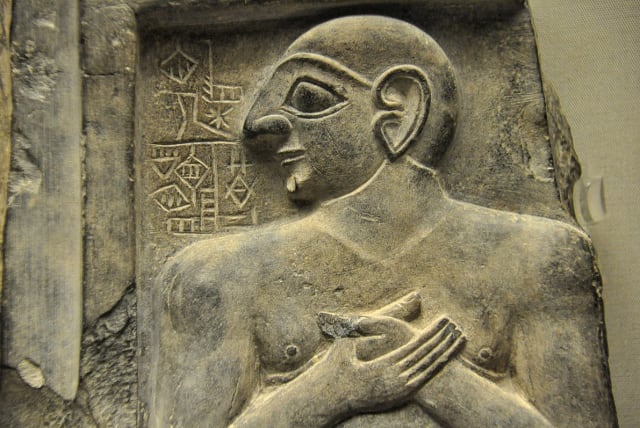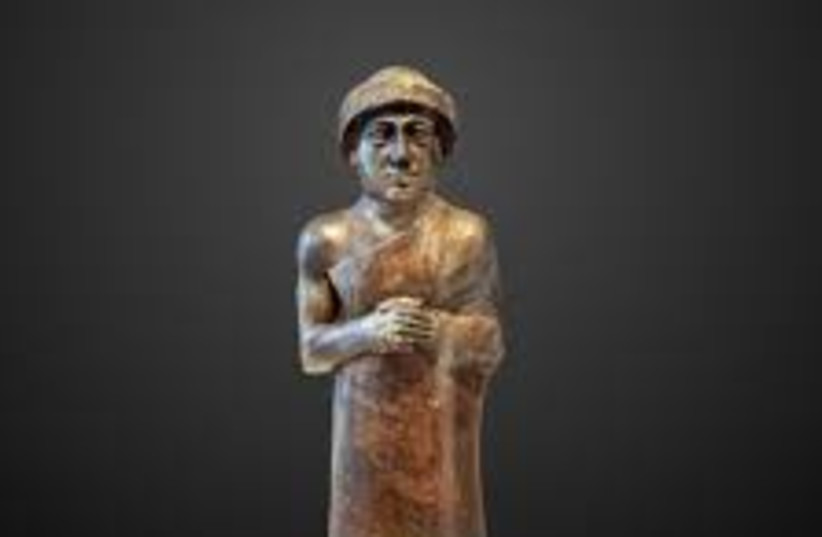Archaeologists excavate ancient Mesopotamian palace, temple

Archaeologists discovered sites that held tremendous political and religious power in the ancient Sumerian city of Girsu.
An archeological site at Girsu, in modern-day south-central Iraq, a major city in the ancient Mesopotamian civilization of Sumer, has been unearthed revealing a palace and a temple that date back over 4000 years.
The excavation efforts were conducted by archaeologists who participated in the Girsu Project, according to Heritage Daily.
The Girsu Project was a 2021 joint endeavor on behalf of the British Museum and the Iraqi State Board of Antiquities and Heritage (SBAH). The project used remote sensing to detect a large complex of ancient buildings. Now, for the first time, the complex is seeing the light of day, Heritage Daily reports.
History of Girsu and its excavation
Girsu was a city in Sumer, the oldest civilization of ancient Mesopotamia. Numerous archaeological discoveries have been made there since the late 19th century, albeit much of the early excavation conducted there was done improperly and resulted in damage to the site.
Additionally, harm has been inflicted on the site by decades of artifact hunters searching for pieces to sell on the black market, Heritage Daily reports.
Nevertheless, over the previous century and a half, many discoveries have been made there. One famous such example is the Stele of the Vultures, a monument comprised of several stone slabs that depict a martial scene.
The University of Oxford describes stele as mixing elements of the divine with elements of the military. It features the king of Lagash, Eannatum, engaged in battle and triumphing over the city’s main rival, Umma.
The palace and temple
The excavation efforts subsequent to the Girsu project uncovered, as Heritage Daily notes, a mudbrick-built palace as well as what is thought to be the primary abode of Ningirsu, the namesake of the city of Girsu and the city’s tutelary deity.
The archaeology website goes on to explain that the title of the temple, Eninnu, the White Thunderbird, was one of the most esteemed in ancient Mesopotamia.
Additionally, over 200 cuneiform, logo-syllabic script, tablets that keep administrative records, were found.
The excavation project was a long time in coming and required lots of preparation. The Daily Mail reported that the archaeologist who led the excavation efforts, Dr. Sebastien Rey, faced many detractors in the years leading up to the commencement of the project.
“I remember when I started in 2016 no one believed me, I went to international conferences and everyone basically told me,” the Daily Mail reports Dr. Rey as saying. “‘Oh no you're making it up, you're wasting your time, you're wasting British museum UK government funding' - that's what they were telling me. I had other supporters and people who believed in this project and so we just persevered.”
Thanks to the perseverance of Dr. Rey and the other archaeologists on the project, one of the most significant sites of ancient Girsu is now known.
Jerusalem Post Store
`; document.getElementById("linkPremium").innerHTML = cont; var divWithLink = document.getElementById("premium-link"); if (divWithLink !== null && divWithLink !== 'undefined') { divWithLink.style.border = "solid 1px #cb0f3e"; divWithLink.style.textAlign = "center"; divWithLink.style.marginBottom = "15px"; divWithLink.style.marginTop = "15px"; divWithLink.style.width = "100%"; divWithLink.style.backgroundColor = "#122952"; divWithLink.style.color = "#ffffff"; divWithLink.style.lineHeight = "1.5"; } } (function (v, i) { });

